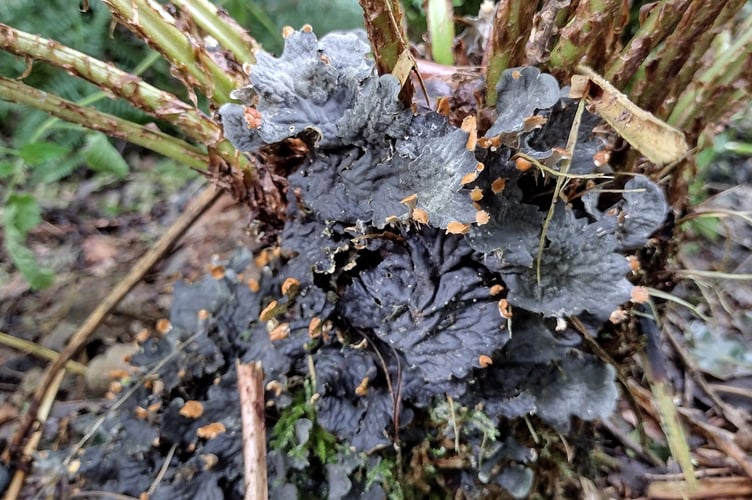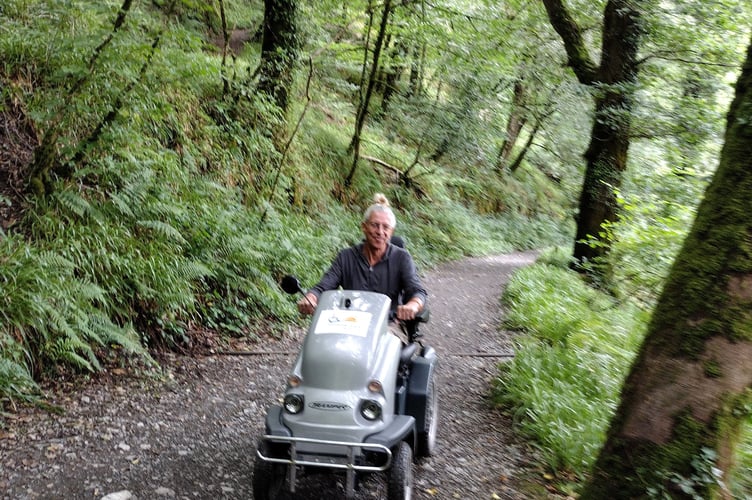Has there ever been a time when you couldn’t get out into nature? Or maybe that is a situation you live with on a daily basis?
Before the full Covid lockdown in March 2020, the UK Government issued guidance to stay at home if you fell into the following categories: aged over seventy, pregnant, or living with certain, specified, health conditions. It was an unprecedented situation and came as a shock to us all to have such restrictions imposed. As you may recall, we had the most glorious weather that spring and it coincided with my turn on the Nature Diary rota. Never have I felt the responsibility more keenly of ‘bringing the outdoors, indoors’ through my writing, holding not only dearly loved family members and friends in mind but also people I may never meet. I hope I was able to offer some small springtime solace to those folk affected during that surreal time. Thankfully, for most of us, the restrictions of that period were temporary; for others, it can be ongoing.

Countryside accessibility for those with disabilities is now a regular topic on programmes like Countryfile and over my working life in ecology I have witnessed a range of improvements and growing awareness of the need for provision. There will, of course, always be room for more. Over the last two years, I have been able to see one of the positive changes in countryside accessibility at first hand.
My old college friend, Gina, received a challenging diagnosis of Cerebellar Ataxia around seven years ago: a degenerative condition of the brain which can affect balance, coordination and speech. Gina’s mobility has been significantly affected by the condition and she now relies on a rollator around the house and for getting about on her allotment down near Southampton where she lives. After the initial shock of diagnosis, she decided to take a proactive approach, taking on the coordinator role for the local Ataxia group and going on ambitious trips out and about, both local and further afield.

Membership of Countryside Mobility has offered welcome opportunities to get out into nature. This organisation hires out Trampers, all-terrain mobility scooters, at over fifty locations around the UK. The National Trust hosts many of these and last year, Gina and I visited Buckland Abbey for a first taste of 4-wheel drive Tramper-handling and the freedoms they offer. This summer, Lydford Gorge was the destination; quite an adventurous prospect after the Abbey’s level grounds!
Following a delightful drive through splendid scenery, past Brent Tor and other Dartmoor landmarks, we arrived at the National Trust car park. Trampers must be booked ahead and once the paperwork was complete, volunteer Alan took us outside to go through the mechanics of the vehicle, where we could and couldn’t go and key techniques to use on this steep and sometimes rugged site. It was clear from his concerned manner that this was not an adventure to be undertaken lightly and it subsequently transpired that some less-than-cautious drivers had ‘come a cropper’, thankfully not seriously, when they had not followed instructions or the map! By now a seasoned Tramper-driver from a range of locations, Gina listened attentively and promised to take all due care. We were off!

First stop, the toilets, into which, Gina had been informed, you could drive the Tramper. This required testing and, duly proven, Gina trundled out towards the gorge path with me scampering alongside. Alan accompanied us until he was satisfied that all was well and pointed us in the direction of the bird hide.
Green upon green upon green; the gnarled trees of the gorge dripped with lichens, mosses and ferns. Looking down to a path below and seeing lush, shuttlecocks of fronds, I was transported back to the rainforests of Australia. Having recently read Guy Shrubsole’s book on the lost temperate rainforests of Britain, I pointed out key indicator plants to Gina who promptly stopped the Tramper to take notes on her phone. Parking outside, we entered the bird-hide and sat in silence. Coal tits and blue tits darted to and from the feeders and others called, unseen, from the trees.
We then ventured onto the gorge path. Steeper, with smooth rocky outcrops presenting a tricky camber, we zig-zagged downwards receiving acknowledgements of both approval and some envy by folk toiling back uphill. Finally on the lowest level, we dawdled alongside the river, drinking in the sun-dappled scenery and swelling music of riffles and waterfalls. Opening out as the river curved around, we drew breath as a narrow white torrent cascaded from high above to the rocky pool below. An opportunity not to be missed, Gina eased gingerly off the seat and down onto the rocks, dipping her feet into the chilly, crystal-clear water. This was surely a moment to treasure.




